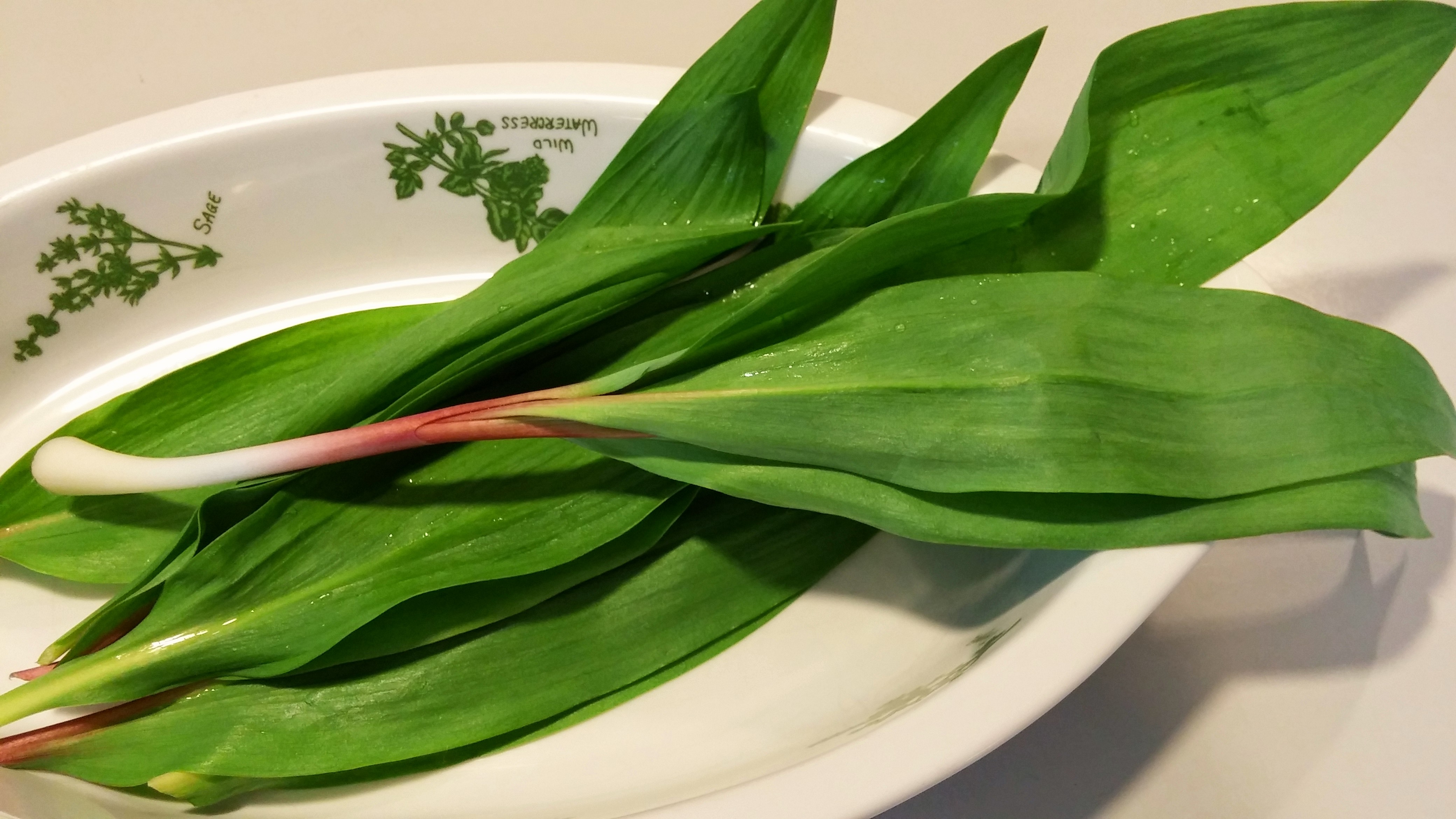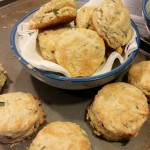My neighbor Myriam is a forager, but not at tag sales. She goes out into the woods looking for wild edible foods. The other day she called to ask, “Would you like some ramps?” The answer was, “Of course!.”
Ramps are a wild member of the onion family native to North America. Most plentiful in mountain areas where they’re harvested in early spring, ramps have a unique fresh flavor and aroma – a combination of leeks and garlic. They can be eaten by themselves as a spring delicacy or used as a featured flavor ingredient in scrambled eggs, omelettes, soups, or slaw. Ramps also add distinction in any dish where you normally want some onion flavor.
A few minutes after the call, Myriam was at the back door with a clutch of ramps wrapped in a damp paper towel. The ramps are about 12 inches root to tip, looking a bit like a chubby scallion. The leaves are a green elongated oval with a pointed tip tapering to a short stem. They look a little like new shoots of lily of the valley or the early stages of daylilies. The plump white bulb at the bottom ends in a short tangle of roots. Between the white and the green is a rosey burgundy color marking the transition where the ramp comes out of the ground. Mine came from a batch growing in Myriam’s yard.
I used the whole plant, except for the roots, slicing it from leaf tip to white bulb. The leaves can be chopped and sprinkled on raw as a garnish or cooked. The white part is best cooked. I immediately looked up recipes for my foraged prizes. With no lack of ideas online, I settled on Clam Chowder, with the ramps substituting for the onions, and Ramp and Bacon Biscuits to go with the chowder. I hoped the ramps would add a fresh spring kick to the chowder and just couldn’t resist the idea of the biscuits.
Ramps grow across the country and up into Canada but thrive and are celebrated in Appalachia. Like asparagus, rhubarb and shad they are among the first spring foods to be available after the fresh food desert of winter. Across Virginia, West Virginia, Tennessee and North Carolina, ramps are welcomed with celebrations and festivals. Batter fried ramps, pickled ramps, cornbread with ramps, ramp salsa, and ramps fried with potatoes along with ramp eating contests dancing, music and revelry draw thousands to these April events.
Chefs are excited about ramps these days. The farm-to-table concept includes foraged foods, and the lucky few chefs that get their hands on some ramps feature them on their menus. Ramps are not distributed commercially. You need a forager (and there are some pros) who bring them around to the back doors of restaurants. The season is short and has a sense of exclusivity.
Chopping the ramps filled our kitchen with their distinctive garlic-leek-onion aroma. Biscuits first: I made a basic
southern milk biscuit recipe adding diced cooked bacon and a handful of the chopped ramps. Biscuits are all about technique, and mine is a little rusty. The biscuits were OK but my Georgia mentor makes them a lot better. More ramps would have made the flavor jump out – the ramp flavor was a bit mild. While the biscuits baked, I made the chowder (recipe on www.FranksFeast.com) substituting chopped ramps for the onions. The garlic-onion character added distinctive and delicious flavor and aroma to the chowder. I will definitely do it again, the next time I have some ramps.
I saw Myriam a few days later and reported the results of my cooking. “Ramps can be used in anything,” she said. Then, with a glint in her eye she told me about a clump of ramps growing wild in our neighborhood, but didn’t say where it was. Foragers are generous with their finds, but not with their sources. Keeping productive places secret is a tradition.
One day I’d like to go on a foraging mission to collect ramps, mushrooms or other wild foods of the woods, going along with someone who knows what to look for and which plants are safe and edible. The location will be kept a secret, I promise. In the meantime I hope to benefit from forager generosity.












No Comment